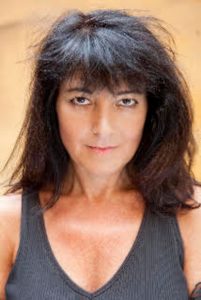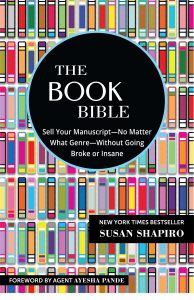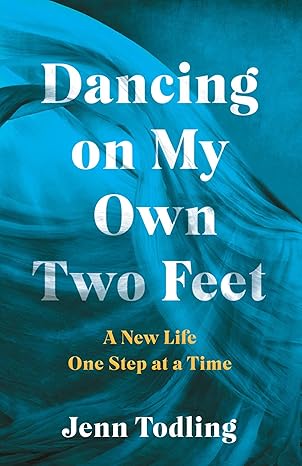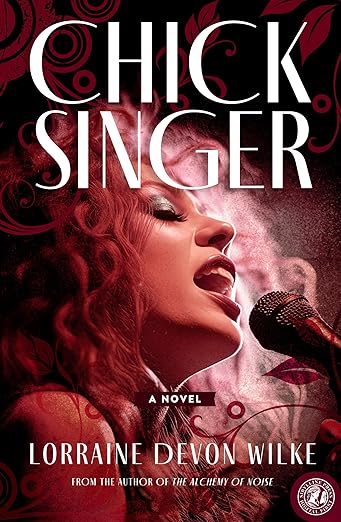WHAT INSPIRED THE BOOK BIBLE? by Susan Shapiro
 Susan B. Shapiro is an award-winning Manhattan writing professor and The New York Times bestselling author of 10 books, including the acclaimed memoirs FIVE MEN WHO BROKE MY HEART, LIGHTING UP and ONLY AS GOOD AS YOUR WORD, the coauthored nonfiction books UNHOOKED and THE BOSNIA LIST, and the novel WHAT’S NEVER SAID. Her books have been translated into 12 languages. She writes for The New York Times, Washington Post, L.A. Times & teaches “the instant gratification takes too long” method at The New School and in private classes and workshops.
Susan B. Shapiro is an award-winning Manhattan writing professor and The New York Times bestselling author of 10 books, including the acclaimed memoirs FIVE MEN WHO BROKE MY HEART, LIGHTING UP and ONLY AS GOOD AS YOUR WORD, the coauthored nonfiction books UNHOOKED and THE BOSNIA LIST, and the novel WHAT’S NEVER SAID. Her books have been translated into 12 languages. She writes for The New York Times, Washington Post, L.A. Times & teaches “the instant gratification takes too long” method at The New School and in private classes and workshops.
In her latest,The Book Bible: How to Sell Your Manuscript—No Matter What Genre—Without Going Broke or Insane, Susan reveals the best and fastest ways to break into a mainstream publishing house.
By Susan Shapiro
My first love was poetry and Shapiro family lore had it that I’d march around our Michigan house as a toddler reciting “I have a little shadow that goes in and out with me,” my favorite poem from Robert Louis Stevenson’s “A Child’s Garden Of Verses.”
When my third grade teacher distributed catalogues of paperback humor, science, poetry, history and novels, I wanted them all. My Midwest parents gave me ten bucks. Spotting a few fives in the kitchen drawer, I swiped those too. While classmates each picked a few, I was the high roller who bought every title. I later feared the theft was a sign of my privilege and immortality. Yet in retrospect, it also forecasted my career as a prolific author and writing teacher celebrating students with hardcovers in every section of the bookstore.
Switching to an artistic school in 6th grade, my luminary teacher Schiavi Diara turned me onto the writers Maya Angelou, Rita Dove, Nikki Giovanni and Lucille Clifton. My other favorite instructor Jack Zucker assigned Isaac Singer, Saul Bellow and the Philips: Roth and Levine. I adored all their books. I was also soon reading The Detroit News, Free Press, New York Times and Wall Street Journal, the newspapers my parents’ subscribed to, as well as magazines, literary journals, novels, memoirs and essay collections from school and local libraries. I devoured a mix of highbrow and lowbrow work I tried to emulate. I kept diaries, journals and scrawled my own bad poems long past midnight in spiral notebooks.
After spending four years studying English literature as an undergraduate in college, I took my therapist’s advice to “hang out with people you want to be.” At 20, I had the highly original idea of becoming a writer in New York. I spent two years finishing a master’s degree at night, taking a day job, sure that furiously revising words until dawn every day would leave to fame, fortune, and the confidence to counter my self-destructive addictions and relationships. Yet after getting two diplomas, I didn’t even know how to write a cover letter to send out work I’d spent the last six years perfecting. My favorite professor recommended me for a job I loved at a literary magazine. But a mentor who read my poems confided, “You have too many words, but not enough music.” Luckily, he was a New York Times editor who bought my essays. Still, it took another decade for me to make a living as a freelance writer.
To pay my rent, I moonlighted as a teacher at The New School and NYU. I invented the “instant gratification takes too long” method, where the goal was to write and publish a short piece by the end of the class. Many did and those short pieces lead to literary agents calling my students. After the thousands of rejections I’d received, seeing my acolytes get six-figure book deals made me feel like the wedding planner who couldn’t get married.
It wasn’t until I was 43 that I sold my first book Five Men Who Broke My Heart to Random House. It was a provocative memoir about quitting destructive relationships. After struggling through twenty-three years of rejection, I was an overnight success. Suddenly I was on The Today Show, translated into seven languages, debt-free. When my PR people (I had people!) complained my photo looked like the college teacher I was, I posed in a black dress and heels against my roof’s skyline.
In 18 months of euphoria between acceptance and publication, I finished a second manuscript about quitting destructive addictions called Lighting Up: How I Stopped Smoking, Drinking and Everything Else I Loved In Life Except Sex.” After a short excerpt called “Love is the Drug” went viral in the New York Observer, my book editor bought the sequel before the first memoir debuted. Wow, I wasn’t a fluke. A film/TV option spurred on my fantasy that I’d follow in the Manolo Blahniks of Candace Bushnell (albeit the brunette version in Aerosoles). Even my conservative parents flew in for the book launch (though my father told me to “stop running naked through the streets,” which led to a new rule with my students: “The first piece you write that your family hates means you’ve found your voice.”)
Wanting my newfound bylines to last forever, I shared other ideas with my agent. “Let’s see if your books earn out their advances,” she said, explaining my publisher first needs to sell enough copies to recoup the financial investment they risked by paying me upfront. Wait, I thought becoming an official author meant I’d already made it. There was another test? I saw my two chronicles of obsession as an exhilarating achievement with great reviews and glowing press. But my sales numbers were low – the second lower than the first, so I wasn’t actually successful. Desperately, I kept trying.
When my Random House editor suggested I consider a different category, she bought another book, a relationship self-help paperback. My cohort of poets teased that I’d be the next Millionaire Matchmaker on reality TV. “Hey, I’ve been trying to sell out for years, nobody was buying,” I joked. Yet that book wasn’t a hit either. Staring down my forties, racing against lost time, I didn’t want to be over. I wished my agent had better explained the landscape. But could anyone provide a plan for my professional trajectory when nobody knew how it would play out? Over the next decade, I switched agencies, co-authored other people’s memoirs, and tried a smaller publisher.
An essay anthology I edited for a local charity Food for the Soul landed on the weekend Today show, NPR and Washington Post and my indie coauthored self-help book Unhooked (on quitting addictions) was a New York Times e-book bestseller in 2014 – for two whole weeks. Earning out its modest advance, I received my first royalty payment for $200. Then an e-reader special reissue of Five Men from a place called BookBub landed on a 2017 Publisher’s Weekly bestseller list 13 years after its original pub date (for one week, underneath Nevertheless by Alec Baldwin).
Over 25 years as a writing professor I found a use for all the frustrations I’d experienced. I shared all the errors I made to keep the aspiring writers in my classes from repeating the mistakes I made. I feared my penchant for switching categories had made me a dabbler with literary A.D.D. Yet it turned out my versatility had a big upside. I’ve been able to help students publish 150 books in the last decade, in all genres, earning advances between $1000 and $500,000. They say you’re supposed to teach the class you wanted to take and write the book you needed to read. With Book Bible -I did. Added bonus – doing book events with my students turned authors is even more thrilling.
—
Find out more about Susan:
website Susanshapiro.net or follow her on Twitter at @Susanshapironet.
THE BOOK BIBLE
https://www.simonandschuster.com/books/The-Book-Bible/Susan-Shapiro/9781510762701
https://www.amazon.com/Book-Bible-Manuscript_No-Matter-Genre_Without/dp/1510762701/
Category: Contemporary Women Writers, How To and Tips

 Hundreds of thousands of books come out every year worldwide. So why not yours? In The Book Bible, New York Times bestseller and wildly popular Manhattan writing professor Susan Shapiro reveals the best and fastest ways to break into a mainstream publishing house.
Hundreds of thousands of books come out every year worldwide. So why not yours? In The Book Bible, New York Times bestseller and wildly popular Manhattan writing professor Susan Shapiro reveals the best and fastest ways to break into a mainstream publishing house.


























